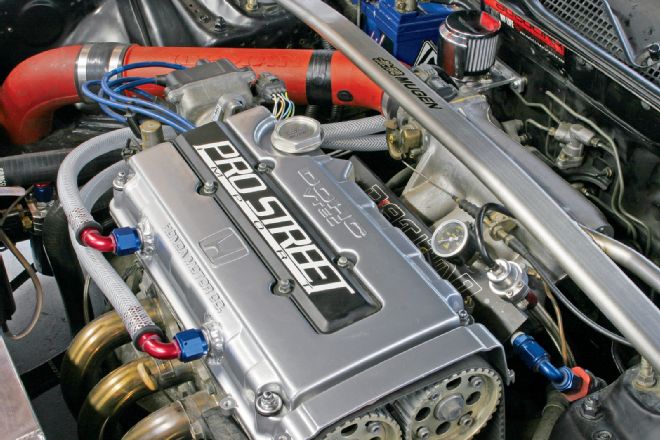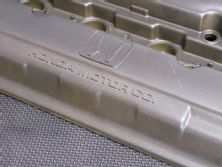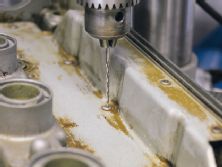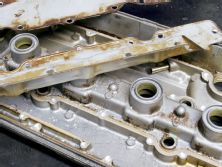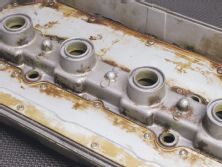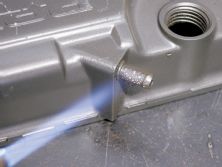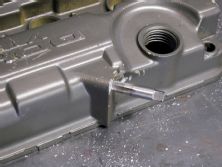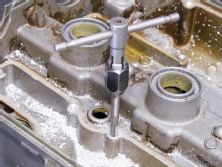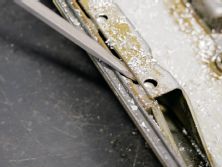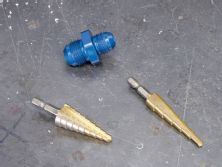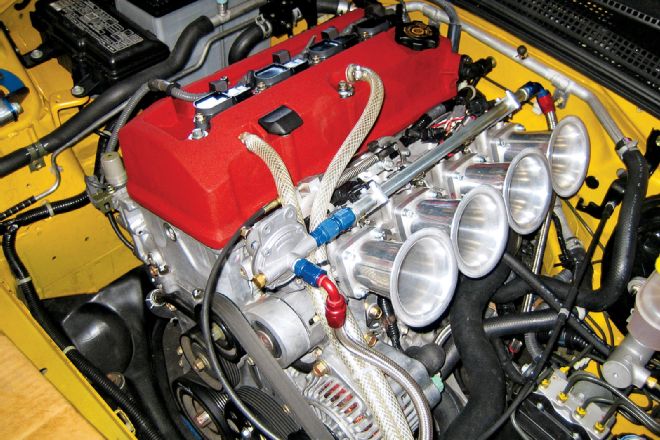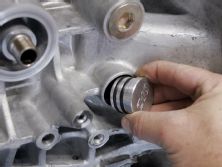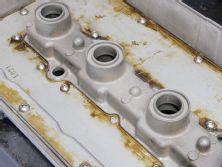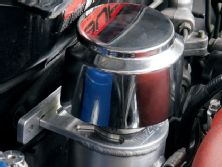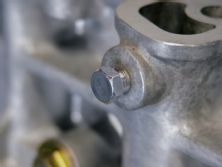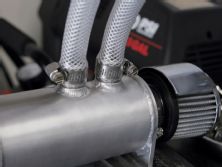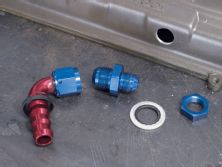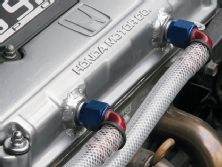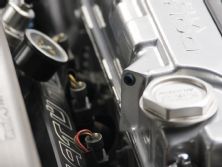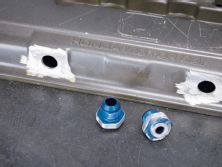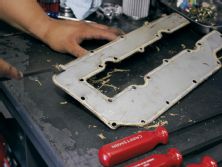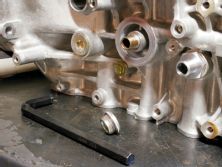Every engine has some sort of crankcase breathing system. The internal combustion process creates pressure, some of which makes its way past the piston rings-along with fuel vapors-and into the rest of the block. Without proper ventilation, seals can burst and oil can leak, and that's if the block doesn't implode on itself first. Oil can also become contaminated from excessive fuel vapors being introduced. A typical Honda crankcase ventilation system uses engine vacuum to draw contaminants out of the crankcase and reintroduce it back into the intake manifold for recycling. It's known as the positive crankcase ventilation system (PCV), but it isn't the most effective thing in the world.
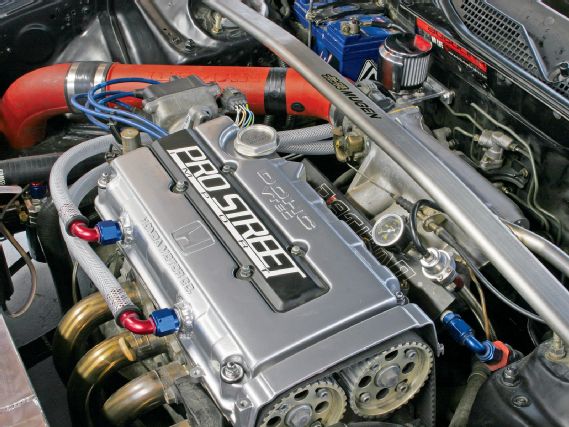 |
Honda Crankcase Ventilation System
|
Honda Crankcase Ventilation System
A PCV system takes into account performance and emissions, but with a big emphasis on emissions. It's supposed to reduce pressure. In a perfect world, we'd like to see 0 psi in the crankcase but this just isn't the case with stock Honda engines. All Honda engines exhibit some sort of crankcase pressure and forced-induction applications are much worse, creating significant power-robbing pressure down below thanks to blow-by. Introducing vacuum into the crankcase reduces these windage losses, which can translate into better performance-ventilation equals power. This is the same principle that's behind dry sump systems, although on a much simpler scale.
In order to comply with emissions standards, modern PCV systems operate in a closed loop. This means that the oil vapors evacuated from the crankcase are reintroduced back into the combustion process. This is good for emissions reduction but introducing such gases back into the intake tract not only decreases performance but increases the likelihood of detonation. To understand the negative affects a PCV system can have all you need to do is look at all the gunk built up inside your throttle body and on your valves. Small amounts of fuel seep past the piston rings during each compression stroke-this is just the nature of the internal combustion engine, but it can lead to thin and contaminated oil. The PCV system's job is to remove this unburnt mixture and keep it from further contaminating the oil. It's instead reintroduced into the intake stream long enough to contaminate things and spit out the exhaust. The specially designed one-way PCV valve allows crankcase evacuation to occur, although how well it works at wide-open throttle is arguably minimal. It's one solution, but not exactly the best one.
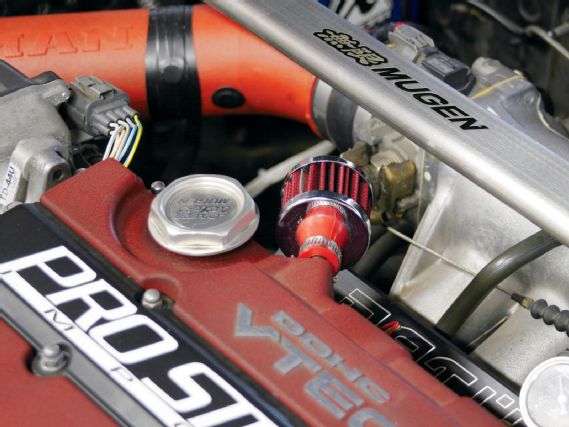 |
Internal combustion engines exhibit crankcase pressure that must be relieved in order to avoid oil leaks and lost power. A simple breather filter connected to the valve cover is an easy start.
|
Internal combustion engines exhibit crankcase pressure that must be relieved in order to avoid oil leaks and lost power. A simple breather filter connected to the valve cover is an easy start.
There are several ways to improve Honda's crankcase evacuation system depending on the type of engine you're using and whether it's naturally aspirated or turbocharged/supercharged. Keep in mind though that most any method other than what the OEMs devised probably won't comply with emissions standards, although that doesn't mean they're exactly dirty. The purpose of a breather tank is similar to a PCV setup except the breather tank simply stores the unwanted gases and blow-by rather than reintroducing them back into the intake stream. Eliminating the PCV system altogether and running an open breather setup is best suited for cars that spend a lot of time at wide-open throttle and is the one we'll discuss. Such engines don't need the vacuum assistance provided by the PCV since the engine produces little to no vacuum at wide-open throttle anyway. An open breather setup like this is suitable for any high-performance engine with excessive blow-by when compared to, say, a bone-stock Accord. The goal is to allow the gases to escape through the path of least resistance and not travel past the piston rings into the crankcase. As you'd expect, there are other methods and several ways of going about installing each of them. There are systems that rely on intake manifold vacuum, which doesn't solve the whole intake contamination problem since the gases we just evacuated are being reintroduced into the cylinders. There are also systems that create vacuum effects by tapping into the intake or exhaust streams in opposing directions to flow as well as systems that use mechanical or electric vacuum pumps. All of these are a bit beyond the scope of the weekend mechanic though and are simply overkill for most any daily driver. An open breather setup is by far the easiest and the most cost-effective solution.

